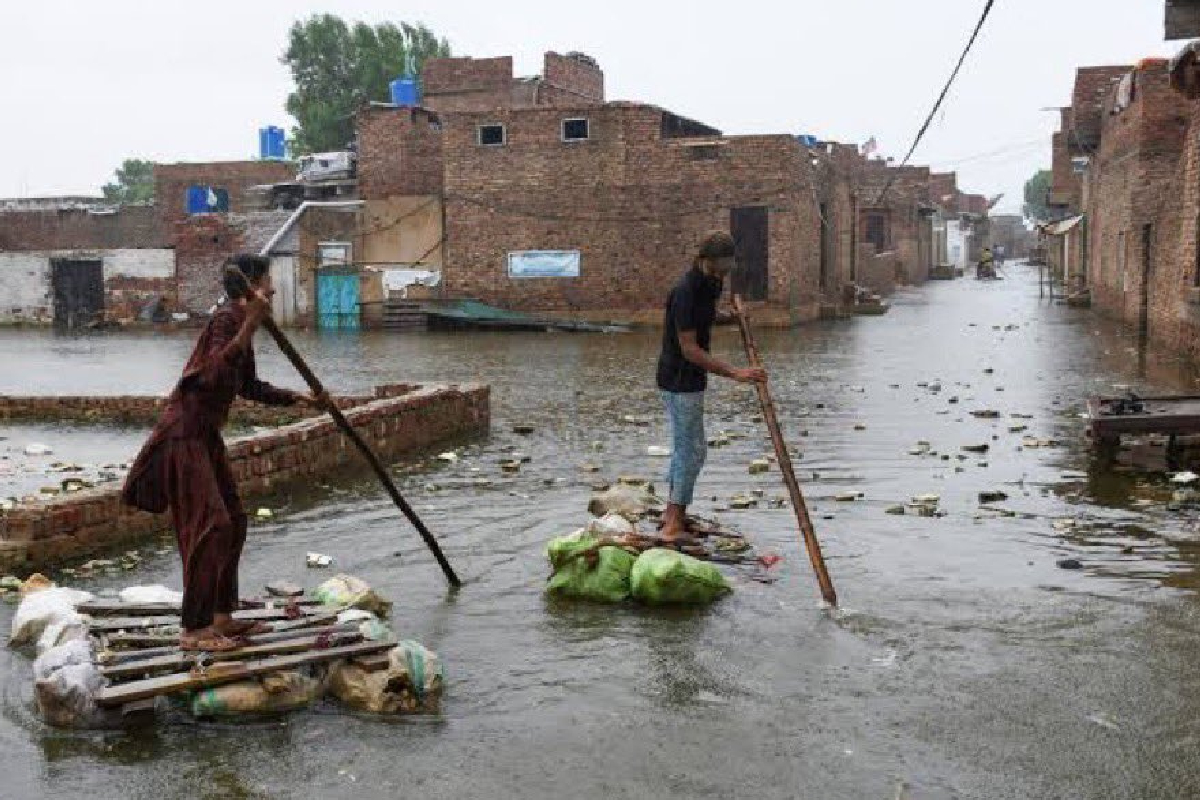Let’s not forget that the current havoc in Pakistan is on the western edge of Jammu and Kashmir – although it has affected areas far beyond. The disaster stems largely from glacier melts in the part of Jammu and Kashmir controlled by Pakistan. Indeed, the heart of the havoc is Swat, which was once considered a part of Jammu and Kashmir – and from where Shah Mir, the ruler who spawned Kashmir’s longest line of sultans, came.
This concerns India not just as a humanitarian issue affecting a close neighbour, but as an environmental and strategic concern too.
Jammu and Kashmir state
The extent to which Chinese activity on the Pakistani side of the Line of Control and the Chinese side of the Line of Actual Control may have destabilised Himalayan ecosystems is a matter of deep concern.
The Karakoram Highway has been upgraded and expanded to an all-weather, largely four-lane expressway that runs right across Jammu and Kashmir state.
The volume of traffic on it has increased by leaps and bounds over the past couple of decades. Many of those vehicles are heavy goods carriers, and they all spew carbon.
Plus, there has been a great deal of construction and development along that highway and elsewhere in what were once relatively uninhabited parts of the state. Even centres like Gilgit, Skardu, and Nagar were pretty thinly populated.
All the concrete, iron, and vehicles that have gone into developing these areas have surely increased the carbon footprint of the places manifold. Yet, one gets the impression that little attention has been paid to the effects of all this in the context of global warming and dangers to delicate ecosystems.
Dangers from CPEC
I have spoken vigorously about the dangerous environmental impact of the various power projects, including huge coal-fired ones, that are to be part of the China-Pakistan Economic Corridor.
In particular, Pakistan must rethink the humungous dams that are being built within Jammu and Kashmir. One of them is to have a reservoir two-and-a-half times the size of Gobind Sagar, which lies behind the Bhakra dam.
Pakistanis must also think deeply about how much they can trust the Chinese, who will operate these projects, and price the power output as they choose. Most CPEC MOUs guarantee profits to the builder and operator. And, in most cases, MOUs provide that disputes are to be settled through mutual negotiation, with no space for arbitration.
The smoke of War
On the other hand, China’s belligerent war preparations across the Line of Actual Control over the past couple of years have been no less troubling – from the environmental perspective, quite apart from the politics of war.
China has proudly posted videos of tank exercises in Aksai Chin, each of which must have spread vast amounts of carbon in the area.
One sympathises with those many hundreds of millions in China who are currently coping with the world’s worst ever heatwave. But one does wish their country’s policymakers would take into account the effects on the environment of whatever steps they take.
Resuscitate lakes and wetlands
On this side of the Line of Control, policymakers must treat the current havoc in Pakistan as a warning. Global warming will cause glaciers right across the Himalayas to melt. As pools of water that are formed within glaciers find openings, they will gush out, causing flash floods below.
In the Kashmir Valley, the catchment areas of the Lidder and Sindh Nallah rivers face grave danger, since these rivers flow from glaciers – above Pahalgam and Sonamarg respectively. The Jhelum, on the other hand, rises from a glorious spring at Verinag.
Planners and administrators must prepare for glacier-related floods in all mountain areas. Construction of houses and offices near rivers and floodplains ought to be discouraged.
As things stand, administrators seem so oblivious to the havoc global warming will wreak that they have spent vast sums to build what they call a mini secretariat on an outcrop around which the Sindh Nallah flows in Ganderbal. And upstream of Kangan, what is touted as a part-time district office has been built right by the river.
These places have superb views, but planners should realise that’s because they are dangerously located.
Wetlands must be restored. As things stand, even Kashmir’s urban planning body has built its office on a wetland. Lakes, which absorb excess rain and the flow of water from streams and rivers, must be revived to the extent possible. The filling of, and construction of, lakes such as the Dal and the Wular must be stopped.
David Devadas is a journalist and security, politics and geopolitics analyst.
Disclaimer: Views expressed above are the author’s own










